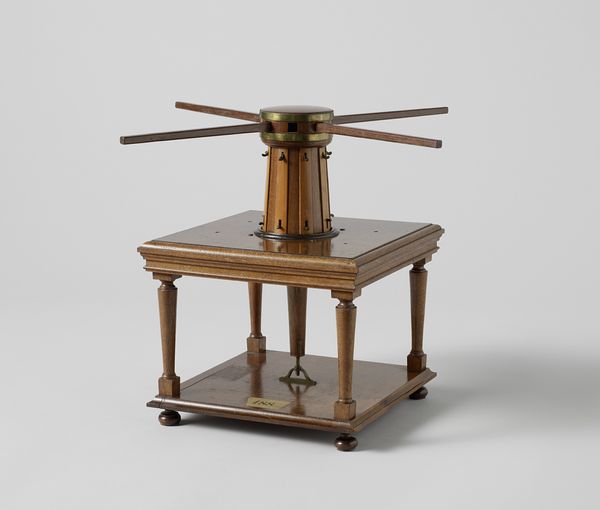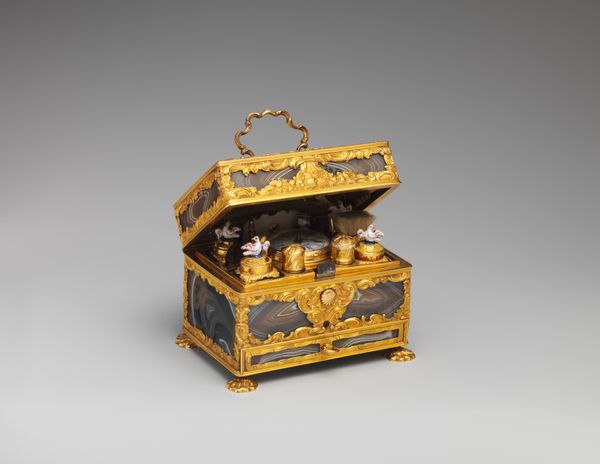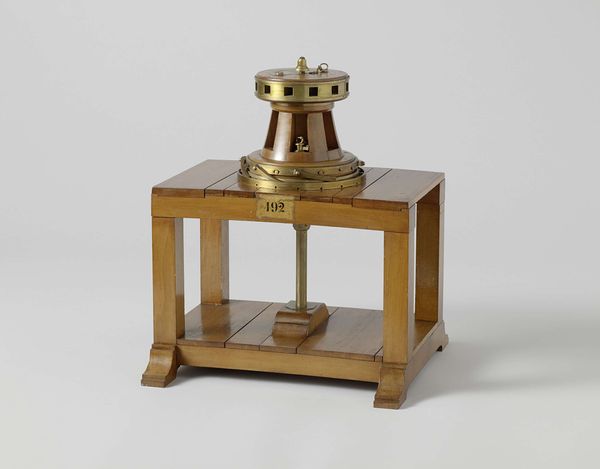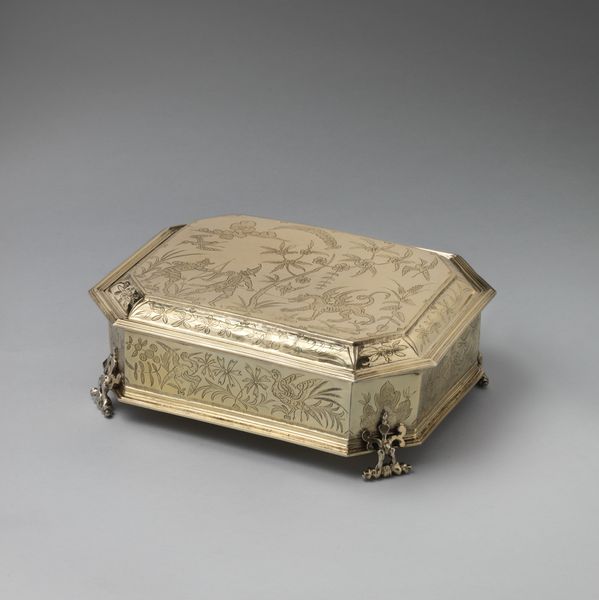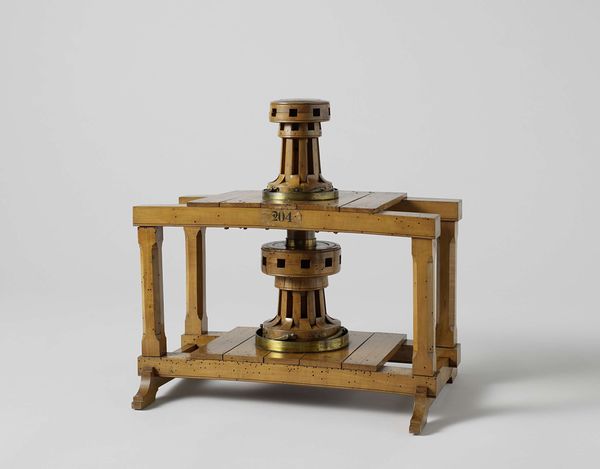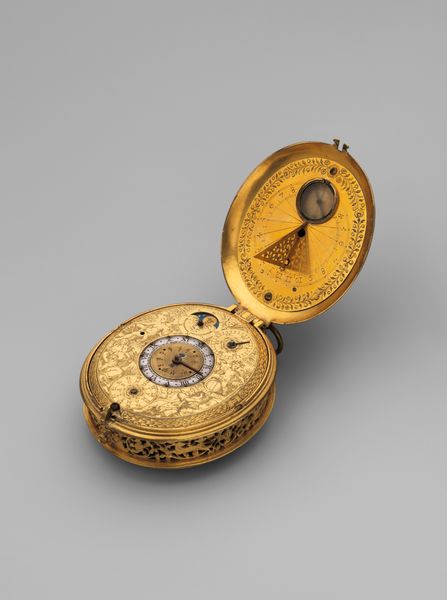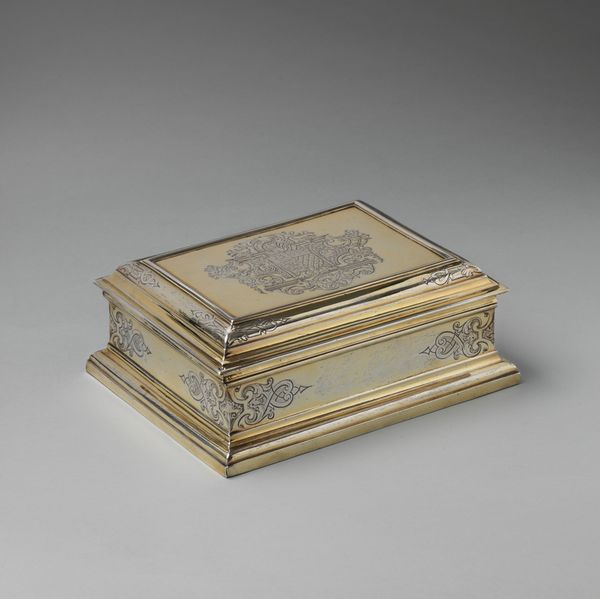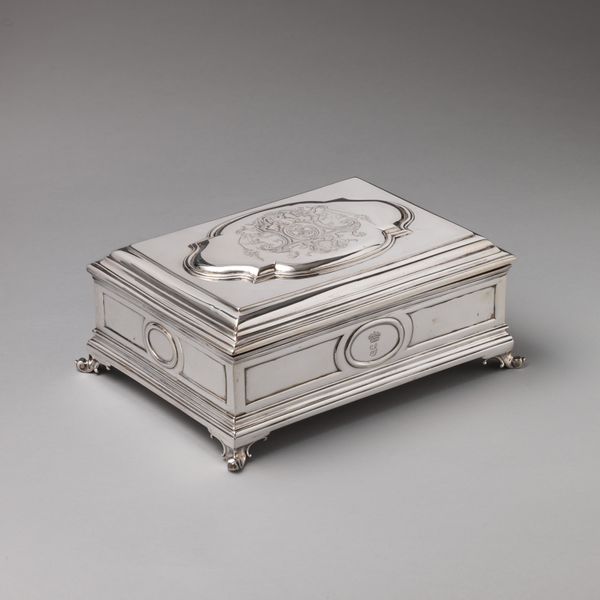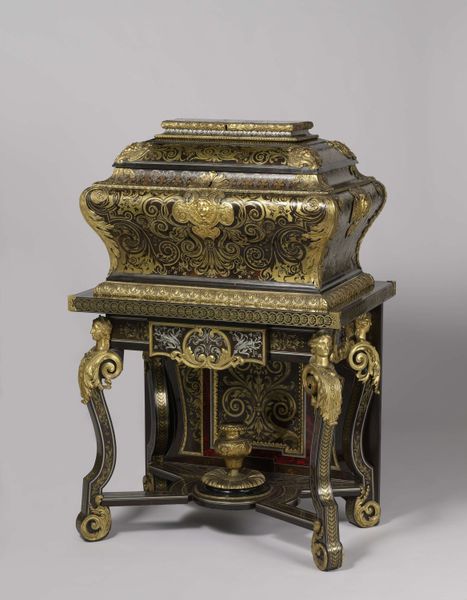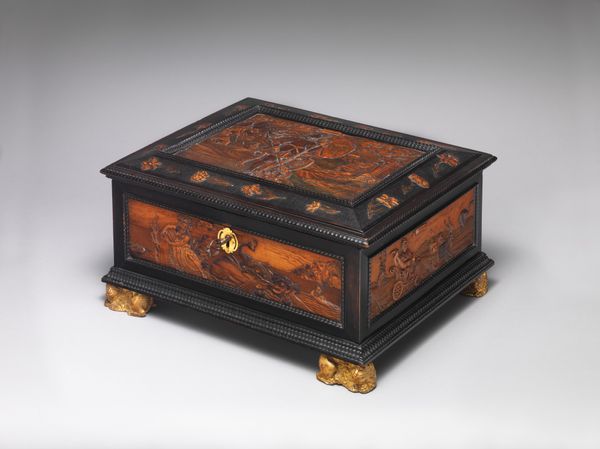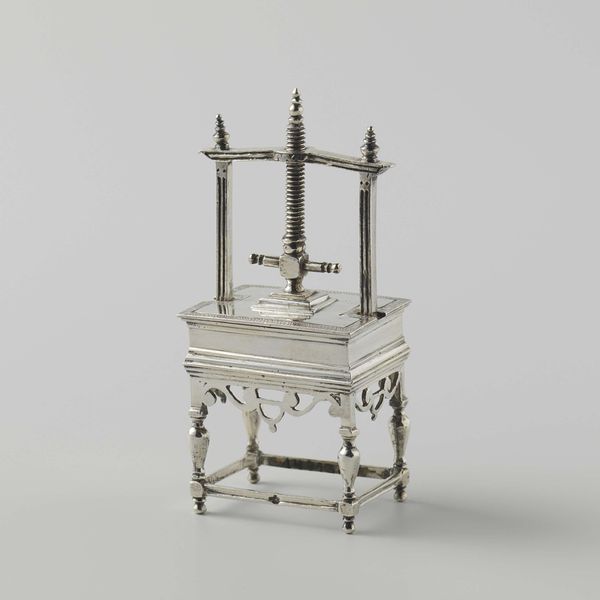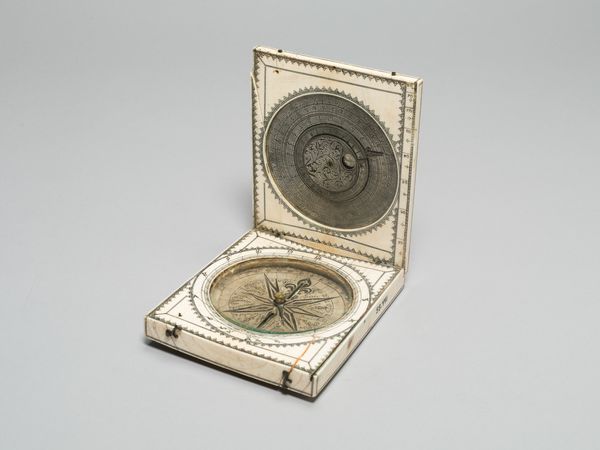
sculpture
#
baroque
#
sculpture
#
decorative-art
Dimensions: Overall: 3 × 5 1/4 × 4 in. (7.6 × 13.3 × 10.2 cm)
Copyright: Public Domain
This table clock was made in Augsburg, Germany, sometime in the 17th century by Johann Heinrich Kleinschmidt. During this time, Augsburg was a hub for technological innovation, particularly in clockmaking. This gilded brass clock represents far more than just a device to tell time. It speaks to the emerging importance of time in the 17th century. As European society shifted towards mercantilism and proto-capitalism, time became a precious commodity, dictating the pace of work, trade, and even social life. The clock reflects the intersection of wealth, technology, and the changing cultural landscape. It tells a story of a society grappling with new ways of organizing life and labor. Consider the craftsmanship, the precious materials, the sheer artistry of the clock. It is not just about knowing the hour, but a statement of status, reflecting the owner's place in a rigid social hierarchy. The clock is a reminder of how time, then as now, shapes our lives, our identities, and our place in the world.
Comments
No comments
Be the first to comment and join the conversation on the ultimate creative platform.
